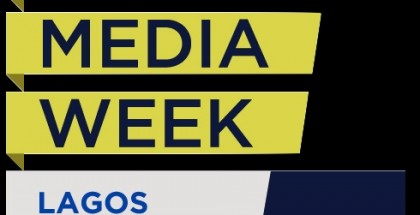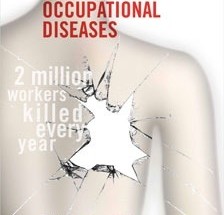A Successful Turnaround Requires Employees Who Are Committed To More Than The Business
konknaijaboy | On 05, Apr 2013
Portland-based outdoor apparel company Nau started with big buzz in 2005. It was founded by Eric Reynolds, the creator of Marmot, an extremely successful outdoor equipment company. Reynolds brought big names from Nike and Patagonia on board, and had a large amount of funding.
But the company rapidly opened stores, paid a huge premium for organic ingredients, created a massive line of clothing to fill those stores, then ran straight into the financial crisis of 2008. It quickly ran out of money and was forced to shutter its retail stores in May of 2008. The names, the ambition, and great products weren’t enough.
Eventually the company was bought out by Horny Toad, another apparel company. Nau had to figure out how to work better as a business while still keeping the core values and principles that attracted its great talent.
“It’s hard to keep someone excited about making rubber doorstops or shower curtains,” Nau general manager, Mark Galbraith, told us. Because the company had a product its employees believed in and a core mission about sustainability and good practices, they were able to survive a tough transition.
Galbraith joined Nau from Patagonia, where he was the director of technical products, when the company first started. He made it through the transition and now serves as the company’s general manager.
Changing the business model, without changing any principles
“I think the core philosophy and what the company’s about hasn’t changed,” Galbraith told Business Insider. “In terms of who we feel a customer is or what our value proposition would be, the kind of unique things we do, emphasizing sustainability and function and fashion, that hasn’t changed.”
What has changed is the business side of things. The company had to avoid the sorts of giant capital-intensive investments they’d made in the past in opening multiple flagship stores. “The first model was completely direct; every sale we made was either brick and mortar where we had put a retail store, or online,” Galbraith said.
The idea behind the company was good, but the sales infrastructure model had to completely change. Now the company embraces a wholesale model, which is not only less capital intense, but it also lets the company reach a much wider audience and build its brand that way.
There was a reason they did things the way they did the first time around. “We were really pretty focused on establishing the brand first by controlling the complete context in which the product and brand could be found, and being around the clothing in a store, we really wanted to tell the brand message so there was a reason why we started there first.”
As appealing as that is, it’s incredibly costly and risky. The lessons for small business owners to take away from the company’s initial struggles are to be careful not to over commit, to start small and build from a strong base, and when something’s not working, to start changing sooner rather than later. “I think shifting faster and more appropriately to a slightly more conservative distribution model would have been a good plan,” Galbraith said.
Hire true believers
Once a company realizes that it needs to change strategies, the hardest part is actually making the transition, surviving some lean years, and keeping everybody on board and focused.
According to Galbraith, the best thing you can do to make it through tough times is to have people who truly believe in the company and its mission, not people just picking up a paycheck.
“One of the core areas of why it was easier for Nau than for other companies is that at the essence of why people work at Nau was a strong personal resonance of belief in the brand, the product, the lifestyle that we represent, and a belief in what business’ role could be,” Galbraith said.
Beyond that, they were dedicated to a high level of function, design, and beauty, so people loved the product aesthetically as well.
“They so strongly believed,” Galbraith said, “that they were able to weather the change, keep a positive attitude and be flexible and say, ‘Great, here’s another way to do it.’”
That takes a commitment to an idea, not just a business. It’s essential that businesses have products that they believe in and that their employees believe in. That makes hard times much more bearable, and makes it much easier to explain why a business model change isn’t a reason to jump ship.
Principles can’t just stay in the employee handbook
The company makes sure that its principles are put into action by having an open studio environment. There are no offices, which means that everything operates very openly and very collaboratively, based on the company’s principles. There’s no stuff going on behind closed doors that contradicts them.
And beyond making sure those ideals of being sustainable and making business a force for good exist on the inside, you have to communicate them in your product and external behavior, while still turning a profit.
“If you want to have a positive impact, you go directly to where you have the most leverage. You can decide — if you want to cause an impact — you can do like the sixties and chain yourself to a tree and do a personal protest,” Galbraith said. “But we think the most positive paradigm is to get into the middle of what is the system that’s probably having the most impact and look at it and say, ‘How can you change that to be as positive as possible?’”
The company tries to live up to that by doing as much as they can at every step: looking at the raw materials, the quality of the product itself so it’s not one that’s consumed once and thrown away, the factory standards, the shipping, and the fact that the company gives two percent of all proceeds to an NGO. When they have control, they try to make an impact. And whenever possible, they get third parties to verify their efforts. It’s about leveraging the power of business to make an impact.
Beyond just doing it, you have to communicate it to the customer, and be as transparent as possible at every stage.
Being a mission-based business is extremely difficult. It’s a hard way to differentiate oneself, and can be more costly. But Nau’s an example of the other side of the equation. The mission kept the company alive, let it keep its people, and let it maintain an identity that allowed it to survive significant changes.
Change is destabilizing and potentially destructive to small businesses. You need to believe in something more than the bottom line to weather it.

















